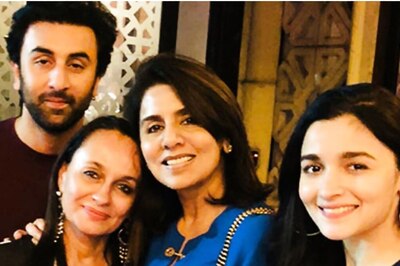
views
BANGALORE: The Carnatic and Hindustani vocal recital by noted vocalists Vidwan S Shankar and Pandit Vinayaka Torvi and the flute recital by seasoned and highly talented Vidwan M K Pranesh and Pandit Praveen Godkhindi underscored the similarities, specialties and peculiarities of the two main branches of the Indian classical music recently. Without infringing into one other’s territory the beauty of both the systems were appropriately highlighted. The event was held at the Kuvempu Kalakshetra for the ‘Akashawani Habba’. The veteran vocalists Pandit Torvi and Shankar possess a unique insight into the aesthetics of sound and music and a favourable turn of creative disposition. They swept one off one’s feet with their uncanny aesthetic and artistic sense. The musicians supported by Bhaskar (violin), top grade artiste of Akashwani C Cheluvaraju (mridanga), Bharadwaj Satvalli(morsing) on the Carnatic side, Vyasamurthi Katti (harmonium) and Vishwanath Nakod (tabla) on the Hindustani side. The artistes whetted the rasikas’ appetite for pure classical singing.I liked the musicians’ sedate temperament which their cool, methodical delineations and deep sonorous tones. During their well planned and ramified expositions they lived up to their reputation. The vocalists’ sensitivity of mind was never in doubt, nor their vision of melodic beauty was ever under a cloud. No where in their unfolding of the ragas did an emotional motif lose its clarity and directness, nowhere did it miss its mark. It was always carried home. That showed that Shankar and Torvi have disciplined urges that find an equally disciplined expression. They evolved imposing structures of similar ragas but with different names in their respective streams of Indian classical music, that is, Carnatic and Hindustani music.Though one wished for more orderliness and concern on the part of organisers, the parallel flow of melodies in their respective attire and ornamentations were an audio delight. Kalyani and its counterpart Yaman was elaborated with all the nuances of the raga. The crisp alap and the spreading out of the line ‘Naadaroopame’ covered all the facets of the raga. The tans, swaras etc beautified the raga further. Likewise Chakravaka/Ahirbhairav, Hindola/Malkauns and Kapi ragas were adapted to different lines of Dasar’s compositions. The tillana in Sindhubhairavi/Bhairavi was a shining jewel of the concert.Captivating flautists: In the flute jugalbandhi Pranesh and Praveen rendered their favourite compositions and ragas. They seem to have a special longing for them. The opening Abhogi varna had a shared rendition. Covering it in different kaalaas, the duo played the sahitya and swaras of the varna alternately. The compatibility and coordination between them was perfect and productive resulting in the creation of many a pleasing combination. As expected, a raga, tana and pallavi was expanded in the raga Hemavathi. The swarapallavi provided ample scope for them to survey the raga thoroughly. The swarakalpana vouched for their impeccable sense of laya. ‘Baaro Krishnaiah’ in raga mallika was impressive. The team of accompanists comprising of Arjunkumar (mridanga), Ravindra Yavagal (tabla) and Karthik Mani (drums) was sober and sensitive.Impressive vocalist: Young vocalist Amrutha Venkatesh’s recital at the Ananya auditorium was mellow, melodious and excellent in all departments of a Carnatic cutcheri. Her erudition, expertise and eagerness to give out the best yielded rich dividends. Her singing built up on a fertile manodharma spiced with extraordinary talent was impressive. Well, within the bounds of tradition and classicism she lent some novelty too to her singing. Her brief note about the krithis she sang was useful. The Kambhoji atatala varna in different speeds and trishra gait also was a solid opener. Accompanied ably by B C Manjunath (mridanga) and G Omkar (ghata) she had Anand Vishwanathan’s violin support. Thyagaraja’s ‘Teliyalenu Rama’ in Dhenuka was rounded off with a few avartanas of swaras. The ragaalpana in Tillang was profound and Purandaradasa’s (Rama) Krishnaiah manege bandaru’ was sung in a telling manner. The swaras in melkaala thrilled not only the rasikas but also the laya accompanists. It was surprising to observe the neraval part in a cosmetic role. Raga Saraswathi (Saraswathi namostute) and Mayamalavagowla (‘Meru Samana’) testified to the artistic equipment of Amrutha.



















Comments
0 comment